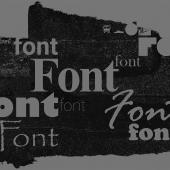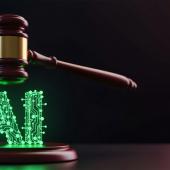CHEAT SHEET
- The law of the (US) land. The 2005 Sixth Circuit court decision Bridgeport Music, Inc. v. Dimension Films imposed strict clearance requirements by enforcing a copyright holder’s claim to even the smallest portion of music.
- Trivial sampling. The 2016 Ninth Circuit ruling VMG Salsoul, LLC v. Ciccone disagreed with the aforementioned Bridgeport decision, holding that the trivial sampling of copyrighted material is not actionable if the original material cannot be recognized.
- Tune of the future. While the VMG decision has largely taken away a musician’s ability to copyright minimal portions of their music, the liability associated with a sampling infringement is sufficient enough to deter another musician from using the material illegally.
- Appropriation art. The Fair Use Doctrine’s four-part test serves to define copyright infringement in the music industry by balancing the rights of the copyright holder with the rights of the musician wanting to sample their music.
Imagine that your company wants to use “just a little bit” of that new hot song to introduce your CEO as he or she stands up to present to your company. Or maybe you want to do a mash up (sample) of music for your company website. Do you need a license? Maybe — but maybe not. Read on.
Legal history of music sampling
The late 1980s and early 1990s was the golden age of “music sampling,” as artists freely repurposed small portions of existing works either without permission or under a relatively affordable licensing process. A number of sample-heavy classics emerged from this period: A Tribe Called Quest, The Low End Theory; De La Soul, 3 Feet High and Rising; N.W.A., Straight Outta Compton, and Beastie Boys, Paul’s Boutique. The latter album reportedly contains at least 125 samples that resulted in around US$250,000 in clearance costs (two law professors estimated that if Paul’s Boutique were released in modern day sampling environment, the record label would lose US$20 million dollars if the record sold the same 2.5 million units. They also estimated that Public Enemy’s classic platinum record Fear of a Black Planet would lose US$5 million. Things changed, however, in 1991 after the first digital sampling dispute went to court. In Grand Upright Music Ltd. v. Warner Bros. Records, 780 F.Supp. 182 (S.D.N.Y. 1991), the district court granted a preliminary injunction against rapper Biz Markie, who sampled a pop song without permission. In an industry rife with examples of new artists “borrowing” from other artist’s exiting works, the decision did not cite any precedent for its ruling or otherwise delve into further copyright issues. The court simply equated sampling with stealing (the opinion opened with the phrase “Thou shalt not steal”), and the tone of the opinion reflected the reticence by some to embrace rap as an emerging music culture. The ruling, along with the much-debated decision in Bridgeport Music, Inc. v. Dimension Films, 410 F.3d 792 (6th Cir. 2005), cemented the modern “clearance culture,” in which widespread sampling faded away due to heightened scrutiny. As a result, the cost of licensing vastly increased. Depending on the artist and the potential sales of the new song, licensing a sample might involve not only upfront payments, but also the relinquishment of a certain percentage of the song’s publishing rights to the sampled artist. Ironically, the Bridgeport court decision — which famously declared “Get a license or do not sample”— reasoned that its ruling would simplify the negotiation process and lower the cost of clearing samples. The effect, however, has been just the opposite.
“Caught, now in court cause I stole a beat / This is a sampling sport / But I’m giving it a new name / What you hear is mine.” In “Caught, Can We Get a Witness?” from the 1988 classic album It Takes a Nation of Millions to Hold Us Back, the rap group Public Enemy made its opinion known about sampling. Once the group’s inimitable production team, The Bomb Squad would create a beat by borrowing from an existing work and looping it into a mosaic of sound and lyrics. The final product is their own original work. Many copyright holders and judges, however, would beg to differ.
Sampling involves the incorporation of short segments of existing sound recordings into new works. More than just a sonic choice that gets layered into the beat, a sample can be many things: a political comment, a startling juxtaposition (e.g., a show tune in a hip-hop song), a nod to one’s musical influences, a vintage sound or musical texture that is impossible to recreate digitally, or proof of one’s ability to go “crate-digging” for obscure LPs.
Remember, far from the recording studio, your internal clients could be “borrowing” as little as a few seconds of music, for which you could be liable. Much like the importance of clearing rights for the use of photography and images in publishing and e-commerce, ample clearance — and indeed, clearing rights for any use of copyrighted music for a commercial purpose — is a necessary task that reduces the risk of infringement. Or, perhaps, the world has changed and not every use requires a license? The Ninth Circuit recently played a new melody, which may have changed the rules for sampling of music and for the copyright fair use analysis generally.
A new player in the orchestra: The Ninth Circuit
Until recently, the Sixth Circuit’s Bridgeport decision was the only circuit court ruling on whether the “de minimis” defense applies to the unauthorized sampling of sound recordings. Bridgeport held that it did not apply and that once a sound is fixed by the copyright holder, no one else has the right to take even a portion of it without permission. This all changed in June 2016 when the Ninth Circuit issued a landmark ruling in VMG Salsoul, LLC v. Ciccone, 824 F. 3d 871 (9th Cir. 2016) (VMG) that repudiated Bridgeport and produced a circuit split. In VMG, the court affirmed the lower court’s grant of summary judgment to the pop icon Madonna, as well as the producer and record company behind the hit song “Vogue,” holding that the de minimis exception did indeed apply to actions alleging infringement of a copyright to sound recordings. The decision further asserted that Madonna’s sampling of a modified .23 second segment of horns from an earlier song by disco group Salsoul Orchestra for use in “Vogue” was de minimis copying and did not constitute infringement.
In VMG, the plaintiff alleged that the producer of Madonna’s hit song “Vogue” copied a .23 second horn hit from an earlier song, “Love Break,” and modified it before inserting it into “Vogue,” thereby violating the plaintiff ’s copyrights. The sample was a modified .23 second “single” horn hit that consisted of a quarter-note chord comprised of four notes — E-flat, A, D, and F — in the key of B-flat and a “double” horn hit that consisted of an eighth-note chord of those same notes, followed immediately by a quarter-note chord of the same notes. As with the original song, other instruments are playing at the same time that the horn hit appears. The lower court ruled that even if the plaintiff proved actual copying, the claim would fail because the alleged copying was trivial. The district court granted summary judgment to the defendants, and provided an award of attorney’s fees.
A quick music licensing recap
Every recorded song has two separate copyrightable parts: a copyright in the musical composition (i.e., the written music and any accompanying lyrics) and in the sound recording (i.e., the fixed sounds that make up the recording, often called a master). Each exclusive right — reproduction, distribution, digital transmission, public performance, public display, and derivative works — can be licensed by the copyright holder to third parties.
THE VARIOUS LICENSES INCLUDE:
- Mechanical license: The right to reproduce for private listening (e.g., MP3s, mobile ringtones, interactive streaming).
- Compulsory license: The right to reproduce and release a “cover” recording of a composition, as long as the new version does not change the basic melody or “fundamental character” of the work. Compulsory license rates are set by statute.
- Digital transmission license: Webcasters of non-interactive streams remit digital performance royalties to sound recording copyright holders as per a statutory rate to SoundExchange.
- Synchronization license: The right to use music with a video or in a movie.
- Public performance: Copyright holders in sound recordings only have a public performance right by means of a digital transmission (e.g., webcasting), but copyright holders in music compositions maintain a public performance right typically administered by the various performance rights associations (e.g, ASCAP, BMI, SESAC).
Ninth Circuit found de minimis use
The Ninth Circuit panel, in a two to one decision, affirmed and ruled that any copying was “de minimis” and was not an infringement of either the composition or the sound recording of “Love Break.” The panel held that the de minimis exception applies to infringement actions concerning copyrighted sound recordings, as with all other copyright infringement actions. See e.g., Newton v. Diamond, 388 F.3d 1189 (9th Cir. 2004) (de minimis exception applies to claims of infringement of a copyrighted musical composition). Under the substantial similarity test, for an unauthorized use of a copyrighted work to be actionable, the use must be significant enough to constitute infringement, reflecting the longstanding principle that trivial copying is not actionable. As such, under the principle, a sample is de minimis only if the average audience would not recognize the appropriation. In this case, the decision would depend on whether a member of the general audience would recognize that the sampling of “Love Break” had occurred. Ultimately, the panel agreed with the district court that, as a matter of law, a general audience would not recognize the brief snippet in “Vogue” as originating from “Love Break.” If your company uses a small sample of recorded music, this decision gives some flexibility and perhaps a better argument for whether such use is fair use.
In reaching that conclusion, the court addressed the de minimis defense to infringement claims relating to both the existing sound recording and its underlying composition. As to the infringement claim on the musical composition, the court found that the defendants copied, at most, a quarternote single horn hit and a full measure containing rests and a double horn hit from “Love Break” and held that a reasonable jury could not conclude that an average audience would recognize the appropriation of the “Love Break” composition. The court noted that the snippets of the “Love Break” composition that were sampled were smaller than the sample at issue in Newton v. Diamond, which involved a six-second sample of a flute passage. Moreover, the sampling from “Love Break” at issue in “Vogue” involved only one instrument group out of many.
As to the claim of infringement of the “Love Break” sound recording, the court framed the argument by stating that when considering a claimed infringement of a copyrighted sound recording, what matters is how the musician’s rendition distinguishes the recording from a generic rendition of the same song. In “Vogue,” the horn hit from “Love Break” was not copied exactly, but was modified to a different key and “cleaned up” by filtering out certain instruments to make it punchier. The court concluded that an average audience member would not recognize the appropriation of the horn hit from “Love Break,” because, among other reasons, the horn hits are short, occur only a few times in “Vogue,” and do not sound identical to the horn hits from the original song. In the end, the court stated that it would be “hard to imagine” that a listener would recognize that sampling had occurred.
Licensing considerations for live events
If you want to play recorded music at a live event, you only need composition rights. Most large businesses that use music frequently obtain an annual “blanket” license to play background music each year. Companies should not expect DJs or other performers to obtain licenses, as contracts typically shift the burden to the event holder. The license fee will depend upon the facts of the use, and there are some limited exceptions when a fee is not required.
Ninth Circuit rejected Sixth Circuit approach
The plaintiff’s remaining argument, resting on the Sixth Circuit’s controversial decision in Bridgeport Music, Inc. v. Dimension Films, 410 F.3d 792 (6th Cir. 2005), also fell flat. The plaintiff contended that even if the copying was de minimis, it was irrelevant since the Sixth Circuit had already decided the issue: for copyrighted sound recordings, any unauthorized copying — no matter how trivial — constitutes infringement. In essence, the Sixth Circuit held that the copyright statute dictated a broader scope of protection for sound recordings than musical compositions or other types of copyrightable work.
The Ninth Circuit disclaimed Bridgeport and stated that nothing in the statutory definition of “sound recordings” suggests that Congress intended to eliminate the de minimis exception for sound recordings or treat them differently than other protected media, such as literary works. In the end, the court concluded: “Because we conclude that Congress intended to maintain the “de minimis” exception for copyrights to sound recordings, we take the unusual step of creating a circuit split by disagreeing with the Sixth Circuit’s contrary holding in Bridgeport.” However VMG is not as radical as it may appear, since major copyright treatises have generally criticized Bridgeport and almost every district court outside the circuit has declined to follow it. See, e.g., Saregama India Ltd. v. Mosley, 687 F.Supp. 2d 1325, 1339 (S.D. Fla. 2009) (rejecting Bridgeport’s rule in a dispute involving a one-second vocal snippet that was sampled; “The Eleventh Circuit imposes a “substantial similarity” requirement as a constituent element of all infringement claims.”
Ninth Circuit dissent
In dissent, Judge Silverman stated he would have followed the Bridgeport rule because it is well-reasoned and persuasive (particularly as Congress failed to clarify or change the law in the wake of the ruling), and the majority’s “fuzzy approach” would require a factual inquiry into whether each instance of sampling was “substantial” enough to make a claim. Echoing the Sixth Circuit’s reasoning, the dissent argued that the Copyright Act grants sound recording holders with the exclusive right to sample or create derivative works from their own recordings and others can pay for a license or hire their own musicians to record a good imitation. See generally Griffin v. J-Records, 398 F. Supp. 2d 1137 (E.D. Wash. 2005) (finding no copyright infringement when the actual sound recording of the plaintiff was not used).
Side note: Another potential risk of sampling is not knowing the identity of the copyright owner of the composition, such that the true copyright holder brings suit years after the release of the work. A recent case illustrates this point. In Urbont v. Sony Music Entertainment, No. 15-1778 (2d Cir. July 29, 2016), a songwriter brought a copyright infringement suit against hip hop artist Ghostface Killah and his label for sampling of the 1960s Iron Man TV show theme song for his 2000 album Supreme Clientele. The lower court dismissed the complaint, ruling that the plaintiff failed to rebut the presumption that Marvel Comics owned the copyright based upon the Work For Hire Doctrine. However, the Second Circuit reversed the decision, finding that the plaintiff raised issues of material fact as to his ownership of the copyright and to whether it was originally created as a work for hire at Marvel’s “instance and expense.” Following the ruling, the parties settled the matter on undisclosed terms.
The result
Digital rights advocates have applauded the VMG ruling as a check on the “copyright maximalism” that they say has curbed free expression in many creative areas, including hip-hop and electronic dance music, where sampling can be too costly for many acts and can only be used liberally by the top musicians at big labels. Indeed, some artists use sampling as a badge of conspicuous consumption. Kanye West and Jay-Z’s 2011 “Otis,” for example, sampled heavily from soul legend Otis Redding and whose popular video featured the duo dismantling and then “tricking out” a US$350,000 Maybach luxury car into a doorless party machine. Due to this ruling, in-house counsel no longer need to say: “no, don’t use that music.” Instead, there is some gray area where once the ruling was black and white. However, just as it is not prudent to assume that a video or image posted online is freely available for commercial reuse, the VMG ruling offers some wiggle room when considering small passages or clips of copyrighted music.
Many questions, however, remain unanswered following the VMG ruling:
The circuit split: The US Supreme Court may one day resolve the divergent rulings of the Ninth and Sixth Circuits. In the meantime, it is likely that copyright holders bringing suit over sampling will select a venue within the Sixth Circuit, while musicians seeking a declaratory judgment will file in the Ninth Circuit or in a district court that had previously rejected Bridgeport.
Long-term effect on sampling: VMG has muddied the waters around sampling clearance. Regardless of one’s view of the hardline rule in Bridgeport, it was easy to apply. Copyright holders have had the dual hammers of Bridgeport and Grand Upright to use as leverage during licensing negotiations. Now, VMG might embolden musicians not to seek any license for “minor” or “de minimis” segments at all. But what is “de minimis” and what is “substantial” is a fact-specific inquiry. As such, the risk of liability and the cost of defending a lawsuit remains a real deterrent.
The fair use argument
A decade ago, Bridgeport’s holding definitively ended the permissive sample culture. However, not all artists abided by the clearance practices of the new era brought by Bridgeport. For example, in 2004, DJ Danger Mouse posted online, without permission, The Gray Album, which was a mashup of samples from The Beatles’ White Album and the a cappella recording of Jay Z’s The Black Album, creating protest from EMI’s attorneys. Ultimately, the piece resulted in no legal action. Similarly, DJ Greg Gillis, who performs under the name Girl Talk, has flouted copyright law with song collages combining multiple samples of modern hip hop with classic rock (e.g., his 2008 album Feed the Animals contained over 300 samples). Girl Talk has apparently avoided being sued by blithely responding that his mashups are protected by fair use. More recently, DJs such as RJD2 and Den Sorte Skole also have used sampling in their works, apparently without infringement actions.
Side note: From an international perspective, the German Federal Constitutional Court recently held that producer Moses Pelham could sample a two-second beat from electronica pioneers Kraftwerk for his song “Nur Mir,” noting that the new use was an independent piece of work, as it did not affect the economic value of the original. The court added that hip-hop as a style of music would not survive if sampling were banned. So perhaps, a slight liberalization surrounding digital sampling has begun worldwide.
Music sampling compared to appropriation art
Putting aside the de minimis defense to copyright infringement, the question remains as to whether certain instances of sampling are protected by fair use. The history of fair use surrounding appropriation art suggests that the same principles might be applicable to the comparable practice of music sampling. Similar to sampling, appropriation art incorporates objects and images from other works, popular media, or consumer advertising into a new visual work, whether for political commentary or not. Many have wondered why there should be different considerations for the visual arts than music when it comes to repurposing old works.
Synchronization license
If you use music synchronized with video (for example, if you create a promotional video to put on your organization’s website), then you need a synchronization license. You need permission (i) from the owner or administrator of rights to the musical composition, and (ii) from the owner of rights in the sound recording. With no compulsory license scheme in place, sync rights are notoriously difficult to negotiate, as the rights holders have no obligation to grant any license, nor is there any statutory limits on the license fee. One option is to use “stock music” that can be obtained from a stock music service. This will often allow more freedom to use the music and the recording.
The fair use doctrine, with its four-part test that takes into account the nature of the work and the harm the secondary use can cause the market for the copyright for the original work. The test mediates between the property rights of copyright holders in creative works and the ability of others to reference and transform those works into something else. The US Supreme Court, in its landmark decision in Harper & Row Publishers, Inc. v. Nation Enterprises, 471 US 539 (1985), stressed the importance of the first fair use factor, which is the “purpose and character of the secondary use.” According to the decision, the more the appropriator uses the copied material for new, transformative purposes, the more it serves copyright’s goal of enriching public knowledge and the less likely it is that the appropriation will shrink the protected market opportunities of the copyrighted work. Many rightsholders and some federal judges have decried this focus on “transformative uses” as overly simplistic, but it has been embraced in many recent decisions from the digital age that have broadened the scope of the fair use doctrine. See e.g., Author’s Guild v. Google, Inc., 804 F.3d 202 (2d Cir. 2015) (Google Books project which scanned digital copies of entire libraries and established a publicly searchable database, with certain limitations, was deemed fair use due to its “highly transformative” nature). Indeed, beyond music, a number of courts have taken an expansive view on fair use, allowing parties to use substantial portions of video or other copyrighted content for parodic, artistic, or educational uses — making counsel’s job more difficult when attempting to parse the gray areas of fair use. See e.g., Equals Three, LLC v. Jukin Media, Inc., 139 F. Supp. 3d 1094 (C.D. Cal. 2015) (humorous commentary on viral videos, which used clips of the copyright works, was found, for the most part, fair use); Seltzer v. Green Day, Inc., 725 F.3d 1170 (9th Cir. 2013) (Green Day’s use, without permission, of a photograph of street art for use as the backdrop of a live concert stage presentation was deemed fair use).
No magic formula for fair use
The fair use doctrine mediates between the property rights established via copyright law and the ability for third parties to use artistic works created by others. There is no magic formula to determine what constitutes “fair use.” Concepts such as “less than 10 seconds of the song” or “less than 30 percent of the picture” are urban legends. Each fair use analysis is decided on a case-by-case basis.
As modern technology has shaped, rightly or wrongly, views on the nature of copyright works — remember the internet trope: “Information wants to be free.” The fair use doctrine has been broadened with respect to modern appropriation art. In 1992, for example, the Second Circuit ruled that artist Jeff Koons’s polychromed wood “String of Puppies” sculpture that was copied with great fidelity from a museum shop notecard of the plaintiff ’s photograph was not fair use. See Rogers v. Koons, 960 F. 2d 301(2d Cir. 1992). Fourteen years later in Blanch v. Koons, 467 F.3d 244 (2d Cir. 2006), Koons’s piece, “Niagara,” an appropriation of fashion photographer Andrea Blanch’s photograph from Allure magazine, was fair use because of the new expression, meaning, and message captured in the new work. In 2013, the Second Circuit gave appropriation art a further boost in a dispute involving artist Richard Prince’s Canal Zone series, which had incorporated the portraits of Rastafarians by photographer Patrick Cariou.
In Cariou v. Prince, 714 F.3d 694 (2d Cir. 2013), the Second Circuit examined 30 works of Richard Prince, created through the appropriation of partial or whole images from the plaintiff ’s book of photographs. The Second Circuit found 25 of the 30 works to be transformative and protected by fair use. In those pieces, Prince’s composition, presentation, scale, color palette, and media were “fundamentally different and new” as compared to the plaintiff ’s photographs. The appeals court went further in rejecting the notion that the secondary work must comment on the original work to qualify for the fair use defense. Instead, the court found that what is critical is how the work in question appears to the reasonable observer, whether it presents a “new expression, meaning, or message,” and whether the secondary work comments on the original or not.
The beat goes on
Using the same principles enunciated in Cariou about appropriation of visual art (coupled with the Ninth Circuit’s ruling in VMG about de minimis sampling), a musician may claim that certain transformative instances of sampling also should qualify as fair use. Beyond changing the copyright infringement calculus for de minimis sampling, the VMG ruling has the potential to redefine the potential market for samples, and thereby affect considerations of fair use. Indeed, VMG directly affects the fair use calculus, namely the fourth factor about the harm that the secondary use can cause to the market for, or the value of, the copyright for the original work. After VMG, many musicians seeking to sample will argue that the market value for a de minimis sample is now zero. Certainly, different types of sampling are more likely to be deemed as fair use than others (compare the use of modified, short segment looped into a song with a musician laying down vocals over the entire instrumental of the original song). Different considerations will begin to come into play when examining whether a sample is fair use of the underlying musical composition.
Ultimately, the precedential reach of VMG will remain undetermined until other federal courts can consider de minimis sampling disputes, the fair use defense, or, in practical terms, whether the ruling will alter sample clearance negotiations or embolden artists and other third parties to skip the permission process altogether. The ruling and trend in fair use jurisprudence cuts both ways for counsel. It may embolden third parties to appropriate your company’s copyrighted content without first obtaining authorization or a license. However, it may also give your own clients a little more flexibility in determining when a license or permission may be necessary. Ultimately, it remains a case-by-case analysis but without a hard line rule anymore for music.
No default “freebie”
When it comes to music sampling, there is no default “freebie:” The original Sixth Circuit Bridgeport decision set the line at zero (every use of copyrighted music requires a license), while the VMG ruling restored the de minimus standard, giving users of works some leeway in borrowing discrete snippets of other works.





